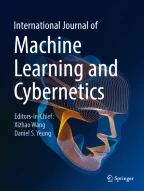Abstract
In this paper, a kind of modified teaching–learning-based optimization algorithm (MTLBO) is proposed to enhance the solution quality and accelerate the convergence speed of the conventional TLBO. Compared with TLBO, the MTLBO algorithm possesses different updating mechanisms of the individual solution. In teacher phase of the MTLBO, the students are divided into two groups according to the mean result of learners in all subjects. Moreover, the two groups present different updating strategies of the solution. In learner phase, the students are still divided into two groups, where the first group includes the top half of the students and the second group contains the remaining students. The first group members increase their knowledge through interaction among themselves and study independently. The second group members increase their marks relying on their teacher. According to the above-mentioned updating mechanisms, the MTLBO can provide a good balance between the exploratory and exploitative capabilities. Performance of the proposed MTLBO algorithm is evaluated by 23 unconstrained numerical functions and 28 CEC2017 benchmark functions. Compared with TLBO and other several state-of-the-art optimization algorithms, the results indicate that the MTLBO shows better solution quality and faster convergence speed.
Similar content being viewed by others
Explore related subjects
Discover the latest articles, news and stories from top researchers in related subjects.References
Rao RV, Savsani VJ, Vakharia DP (2012) Teaching–learning-based optimization: an optimization method for continuous non-linear large scale problems. Inf Sci 183(1):1–15
Doğan B, Ölmez T (2015) A new metaheuristic for numerical function optimization: vortex search algorithm. Inf Sci 293:125–145
Kennedy J. Particle swarm optimization[M]//encyclopedia of machine learning. Springer US, 2010: 760–766
Karaboga D, Basturk B (2007) A powerful and efficient algorithm for numerical function optimization: artificial bee colony (ABC) algorithm. J Glob Optim 39(3):459–471
Rashedi E, Nezamabadi-Pour H, Saryazdi S (2009) GSA: a gravitational search algorithm. Inf Sci 179(13):2232–2248
Gandomi AH, Alavi AH (2012) Krill herd: a new bio-inspired optimization algorithm. Commun Nonlinear Sci Numer Simul 17(12):4831–4845
Cuevas E, Cienfuegos M, Zaldívar D et al (2013) A swarm optimization algorithm inspired in the behavior of the social-spider. Expert Syst Appl 40(16):6374–6384
Mirjalili SSCA. (2016) A Sine Cosine Algorithm for solving optimization problems. Knowl Based Syst 96:120–133
Rao RV, Savsani VJ, Vakharia DP (2011) Teaching–learning-based optimization: a novel method for constrained mechanical design optimization problems. Comput Aided Des 43(3):303–315
Li G, Niu P, Xiao X (2012) Development and investigation of efficient artificial bee colony algorithm for numerical function optimization. Appl Soft Comput 12(1):320–332
Mernik M, Liu SH, Karaboga D et al (2015) On clarifying misconceptions when comparing variants of the Artificial Bee Colony Algorithm by offering a new implementation. Inf Sci 291:115–127
Petrović M, Vuković N, Mitić M et al (2016) Integration of process planning and scheduling using chaotic particle swarm optimization algorithm. Expert Syst Appl 64:569–588
Mandal B, Roy PK, Mandal S (2014) Economic load dispatch using krill herd algorithm. Int J Electr Power Energy Syst 57:1–10
Niu P, Ma Y, Li M et al (2016) A kind of parameters self-adjusting extreme learning machine. Neural Process Lett 44(3):813–830
Ghasemi M, Ghavidel S, Rahmani S et al (2014) A novel hybrid algorithm of imperialist competitive algorithm and teaching learning algorithm for optimal power flow problem with non-smooth cost functions. Eng Appl Artif Intell 29:54–69
Niknam T, Fard AK, Baziar A (2012) Multi-objective stochastic distribution feeder reconfiguration problem considering hydrogen and thermal energy production by fuel cell power plants. Energy 42(1):563–573
Niknam T, Azizipanah-Abarghooee R, Narimani MR (2012) An efficient scenario-based stochastic programming framework for multi-objective optimal micro-grid operation. Appl Energy 99:455–470
Niknam T, Azizipanah-Abarghooee R, Narimani MR (2012) A new multi objective optimization approach based on TLBO for location of automatic voltage regulators in distribution systems. Eng Appl Artif Intell 25(8):1577–1588
Niknam T, Golestaneh F, Sadeghi MS (2012) θ-Multiobjective teaching–learning-based optimization for dynamic economic emission dispatch. Syst J IEEE 6(2):341–352
Rao RV, Kalyankar VD (2013) Parameter optimization of modern machining processes using teaching–learning-based optimization algorithm. Eng Appl Artif Intell 26(1):524–531
Rao RV, Kalyankar VD (2012) Multi-objective multi-parameter optimization of the industrial LBW process using a new optimization algorithm. Proc Inst Mech Eng Part B J Eng Manuf 226(6):1018–1025
Krishnanand KR, Panigrahi BK, Rout PK et al (2011) Application of multi-objective teaching–learning-based algorithm to an economic load dispatch problem with incommensurable objectives[M]//swarm, evolutionary, and memetic computing. Springer, Berlin, pp 697–705
Li G, Niu P, Zhang W et al (2013) Model NOx emissions by least squares support vector machine with tuning based on ameliorated teaching–learning-based optimization. Chemometr Intell Lab Syst 126:11–20
Rao R, Patel V (2013) Comparative performance of an elitist teaching–learning-based optimization algorithm for solving unconstrained optimization problems. Int J Ind Eng Comput 4(1):29–50
Rao RV, Patel V (2013) An improved teaching–learning-based optimization algorithm for solving unconstrained optimization problems. Scientia Iranica 20(3):710–720
Roy PK, Bhui S (2013) Multi-objective quasi-oppositional teaching learning based optimization for economic emission load dispatch problem. Int J Electr Power Energy Syst 53:937–948
Črepinšek M, Liu SH, Mernik M (2013) Exploration and exploitation in evolutionary algorithms: a survey. ACM Comput Surv 45(3):35
Awad NH, Ali MZ, Liang JJ, Qu BY, Suganthan PN (2016) Problem definitions and evaluation criteria for the CEC2017 special session and competition on single objective bound constrained real-parameter numerical optimization, Technical Report, Nanyang Technological University, Singapore
Acknowledgements
The authors make a grateful acknowledgement for the associate editor and the reviewers for their valuable time and thoughtful comments to the improvement of the paper. This work is supported by the National Natural Science Foundation of China (Grant no. 61573306).
Author information
Authors and Affiliations
Corresponding author
Additional information
Publisher’s Note
Springer Nature remains neutral with regard to jurisdictional claims in published maps and institutional affiliations.
Rights and permissions
About this article
Cite this article
Niu, P., Ma, Y. & Yan, S. A modified teaching–learning-based optimization algorithm for numerical function optimization. Int. J. Mach. Learn. & Cyber. 10, 1357–1371 (2019). https://doi.org/10.1007/s13042-018-0815-8
Received:
Accepted:
Published:
Issue Date:
DOI: https://doi.org/10.1007/s13042-018-0815-8
